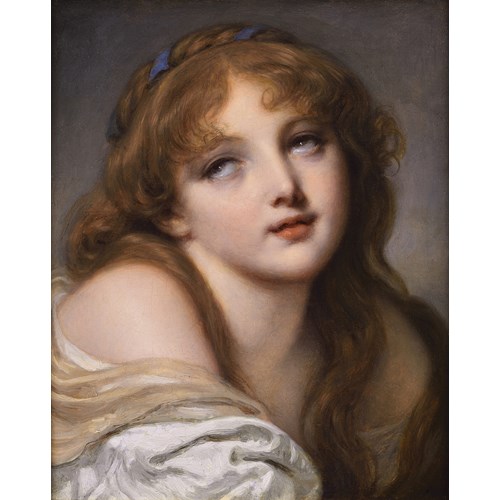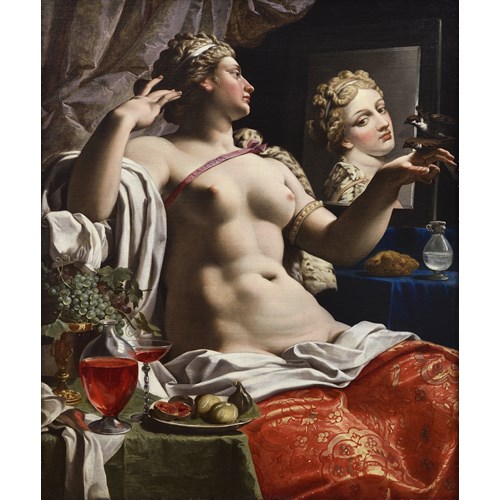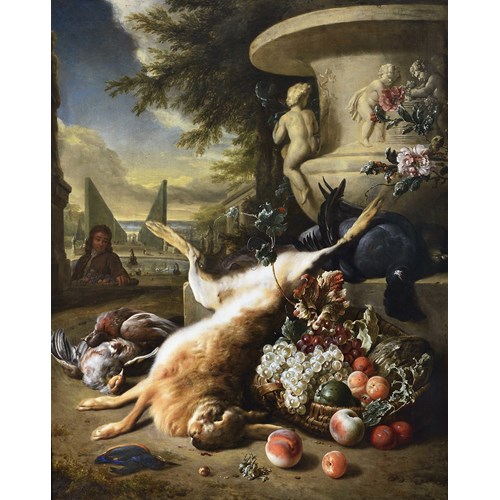Marketplace
The Demolition of the Citadel of Antwerp
Marten van Cleve the Elder
The Demolition of the Citadel of Antwerp
Epoque 1400-1600, 16th Century
Origine Belgium, Antwerp
Medium Oil on panel
Dimension 68.9 x 117.5 cm (27¹/₈ x 46¹/₄ inches)
This recently rediscovered painting constitutes an important addition to the painted oeuvre of Marten van Cleve I. The Antwerp Citadel, a pentagon with five bastions, was completed in 1572 on the orders of the Duke of Alva (1507-1582), the Governor of the Netherlands, to quell resistance to Spanish Habsburg rule at the beginning of the Dutch Revolt. On 4-6 November 1576, Spanish troops, whose salaries were in arrears, sacked and plundered the city, leaving more than 2,500 dead and 100 burned buildings—including the city’s town hall—in their wake. A year later an agreement between the Prince of Orange and the States General, on the one side, and the new governor, Don Juan of Austria (1547-1578), on the other, delivered the citadel to the States General. In a symbolic move in reaction to what seemed to be the end of the Spanish tyranny, the citizens of Antwerp decided to demolish the bastions known as the Bolvardo del Duc (left) and the Bolvardo de Ernando (right) that faced the city.
As is typical of van Cleve’s works, which were developed concurrently with those of his townsman Pieter Bruegel I (c. 1525/30-1569), a broad spectrum of Antwerp society appears here. Among the groups that can be identified in this painting are Spanish soldiers, German mercenaries (Landsknechts), noblemen, ordinary citizens, day laborers, and peasants. The man on horseback at far left of this composition has been tentatively identified as either Charles de Redelghem, Baron of Liederkerke, the Civil Governor of Antwerp, or Captain Portus de Noyelles, Seigneur de Bours, who played an influential role in seizing the citadel and subsequently handing it over to the States General (European Paintings in the Collection of the Worcester Art Museum, Worcester, 1974, I, p. 187).
The historic and symbolic significance of this event made it an especially popular one among Antwerp collectors of the last quarter of the 16th century. No fewer than five versions of this composition by van Cleve are known, all varying slightly in size and detail (see K. Ertz and C. Nitze-Ertz, Marten van Cleve, 1524-1581: kritischer Katalog der Gemälde und Zeichnungen, Lingen, 2014, pp. 176-78, nos. 90-3). The present example is closest to one now in the collection of the Noordbrabants Museum, s’Hertogenbosch.
As is typical of van Cleve’s works, which were developed concurrently with those of his townsman Pieter Bruegel I (c. 1525/30-1569), a broad spectrum of Antwerp society appears here. Among the groups that can be identified in this painting are Spanish soldiers, German mercenaries (Landsknechts), noblemen, ordinary citizens, day laborers, and peasants. The man on horseback at far left of this composition has been tentatively identified as either Charles de Redelghem, Baron of Liederkerke, the Civil Governor of Antwerp, or Captain Portus de Noyelles, Seigneur de Bours, who played an influential role in seizing the citadel and subsequently handing it over to the States General (European Paintings in the Collection of the Worcester Art Museum, Worcester, 1974, I, p. 187).
The historic and symbolic significance of this event made it an especially popular one among Antwerp collectors of the last quarter of the 16th century. No fewer than five versions of this composition by van Cleve are known, all varying slightly in size and detail (see K. Ertz and C. Nitze-Ertz, Marten van Cleve, 1524-1581: kritischer Katalog der Gemälde und Zeichnungen, Lingen, 2014, pp. 176-78, nos. 90-3). The present example is closest to one now in the collection of the Noordbrabants Museum, s’Hertogenbosch.
Epoque: 1400-1600, 16th Century
Origine: Belgium, Antwerp
Medium: Oil on panel
Dimension: 68.9 x 117.5 cm (27¹/₈ x 46¹/₄ inches)
Plus d'œuvres d'art de la Galerie









